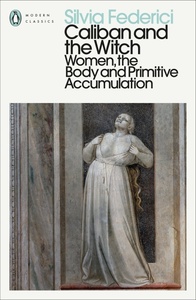Take a photo of a barcode or cover
informative
slow-paced
challenging
dark
informative
sad
medium-paced
informative
inspiring
reflective
slow-paced
I would recommend everybody to read this book and certainly will reread it with time. An excellent exploration of the transition from the feudal system to capitalism, the preconditions created to maintain that transition and the effect it had on women's individual liberty.
challenging
informative
slow-paced
challenging
informative
reflective
slow-paced
informative
reflective
medium-paced
challenging
informative
sad
slow-paced
medium-paced
I really wanted to like this book and believe her whole theory about the beginning of capitalism. But. It's just plain wrong.
As a student of European history I'm amazed that you can cite this many books without unterstanding how premodern societies work. Like, there was no such thing as a state as we know it today. Things like social ingeneering simply not possible ans even only implementing laws was something a lot of premodern authorities struggled with.
Another thing that buggs me is her handling of primary sources. She never really questions them or thinks about their credibility: Did the writers / painters have some motive to frame something in a certain way? Like the basics of any scientific workings in history.
Also, the way she describes the witch hunts in Europe with mostly English or Scottish (and some few from northern Italy) examples just makes me angry: The region with likely the most cases of witch trials and executions is the Southern Holy Roman Empire and parts of Eastern France. Why wouldn't she take a look at these sources? But then she would have to admit, that there were considerable differences in the region (and all of Europe) in how, why and from whom witch trials were held.
As a student of European history I'm amazed that you can cite this many books without unterstanding how premodern societies work. Like, there was no such thing as a state as we know it today. Things like social ingeneering simply not possible ans even only implementing laws was something a lot of premodern authorities struggled with.
Another thing that buggs me is her handling of primary sources. She never really questions them or thinks about their credibility: Did the writers / painters have some motive to frame something in a certain way? Like the basics of any scientific workings in history.
Also, the way she describes the witch hunts in Europe with mostly English or Scottish (and some few from northern Italy) examples just makes me angry: The region with likely the most cases of witch trials and executions is the Southern Holy Roman Empire and parts of Eastern France. Why wouldn't she take a look at these sources? But then she would have to admit, that there were considerable differences in the region (and all of Europe) in how, why and from whom witch trials were held.



